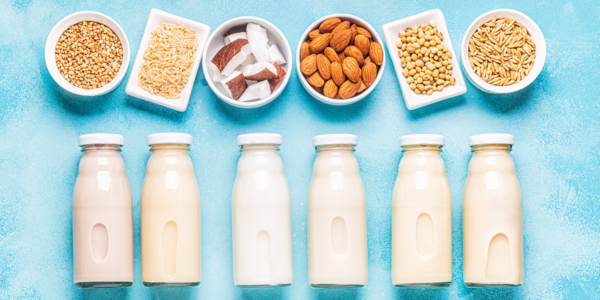|
Welcome to Part 2 of this month's blog series which is focused on the five most common micronutrient deficiencies in athletes and exercisers. Not only can having an active movement routine leave you short on calories if you aren’t being mindful of your true calorie/energy needs, but it can have a serious effect on your micronutrient status as well. Micronutrients aren’t called “micro” because they are less important than our macronutrients. They are called micronutrients because we need them in smaller quantities than our macronutrients, but they are equally, if not MORE important. If you have an active movement routine, you are certainly at a higher risk of becoming micronutrient deficient! The most common sign of a deficiency are food cravings! These can come from high stress, low caloric intake, high intake of processed foods (which are void of natural micronutrients) and low protein intake. When your body becomes micronutrient deficient, you might experience a whole slew of symptoms, including numbness and tingling in hands, legs or feet, balance problems, anemia (which is NOT just an iron deficiency problem!), swelling, weakness, fatigue, impaired immunity, higher risks of injury and even paranoia! Ugh, no one wants ANY of that! Especially if you are trying to move your body to PROMOTE health, not make it worse! If you are experiencing any of these symptoms, especially food cravings, you should check out my free food cravings chart to learn which foods you should be targeting to increase in your diet! This week, we are diving into the details on calcium deficiency, including the signs of deficiency, risk factors, what role calcium plays in athletic performance, real food options for optimizing uptake, testing and even best supplementation practices. AND, I’m focusing on NON-dairy sources of calcium since dairy tends to be a top allergen for many people (and most don’t even know it!) and we don’t need dairy to be calcium sufficient! CALCIUM Calcium is one of the most important minerals in the body. We know that it is essential for the formation of bones and teeth, but it is also critical for optimal athletic performance! Besides aiding in healthy bones and teeth, calcium aids in:
Approximately 99% of the body’s calcium is stored in the bones, but cells, particularly muscle cells, and blood also contain some calcium. There are 2 main hormones in the body that help very precisely control the amount of calcium in the blood: parathyroid hormone and calcitonin. If you do not consume enough calcium in your diet, these hormones will steal calcium from the bones to meet the needs of the blood and can result in much higher risk of stress fractures. Since early signs of calcium deficiency are not apparent, a DEXA scan is the best and most accurate way to learn if you have decreased bone density or osteopenia (the less severe form of osteoporosis). I have to say, I have seen a lot of DEXA scans in my private practice and I am always saddened by the lack of bone density in endurance athletes, especially compared to the DEXA scans I see from strength based athletes. Beyond just a lack of weight bearing activities, this can be one of many signs that there may be a calcium deficiency. To maintain a proper level of calcium in blood without weakening the bones, it is recommended to consume at least 1,000 to 1,500 milligrams of calcium each day from real food sources. CALCIUM CO-FACTORS Calcium works very closely with both Vitamin D and phosphorus. When you're consuming and absorbing enough calcium, your need for vitamin D will go down. The opposite is true for phosphorus, where when you over consume it, it will drive up your need for both calcium and vitamin D! This is an important reminder that just willy-nilly taking random supplements without really knowing if you truly need them can actually drive a deficiency in other micronutrients! The goal with micronutrients is about finding balance: not too much and not too little. This is especially true with Vitamin D, calcium and phosphorus! If your head is already spinning just wondering how you’re going to be able to figure out your own balance and needs, don’t worry! Tailoring diet, supplement, and lifestyle changes based on bioindividual needs is what I love to do. So if you’re looking for some help, you can schedule a discovery call to learn about how I can support you! SIGNS OF DEFICIENCY Signs of calcium deficiency include:
However, since these signs appear under more extreme calcium deficiencies, getting a DEXA scan to assess bone density levels can be a helpful first step in discovering potential calcium deficiencies. RISK FACTORS Athletes who consume a diet low in dairy products, edible bones and leafy greens are most at risk for a calcium deficiency. Female athletes who have developed amenorrhoea (loss of menstrual periods) or other menstrual irregularities due to low estrogen levels are at greater risk for reduced bone density, fractures and osteopenia. This is because low estrogen levels lead to low calcium levels and can result in bone loss. TESTING Since Vitamin D, calcium and phosphorus all work closely together, it is important to obtain an accurate picture of all 3 micronutrients when looking for deficiencies. 25-hydroxyvitamin D is a standard blood test you can obtain from your medical doctor. This marker will measure your serum vitamin D levels. If your results come back low, this can be the result of a calcium deficiency or presence of excess phosphorus. Functional 25-hydroxyvitamin D levels should be between 30-40 ng/mL. Parathyroid Hormone, or PTH, can help you understand your Vitamin D, calcium and phosphorus levels. A deficiency in either calcium and/or vitamin D levels can raise your PTH levels above normal values. Functional parathyroid hormone levels should be between 10-55 pg/mL. Calcitonin, the hormone that is responsive to calcium levels in the blood, can be measured in the serum. Excess consumption of calcium will raise this marker. This marker can be especially useful when someone is supplementing with calcium to ensure excess calcium isn’t being consumed and absorbed. Function calcitonin levels should be less than 10 pg/mL. It is always critical when you have testing completed that you work with a practitioner who understands the individual values in addition to how they all work together to create optional health. Having the knowledge about your own body is one thing, but knowing how to use that knowledge to optimize your health is another. Always consult with a knowledgeable medical provider when obtaining and reviewing testing! If you need help interpreting your lab tests, reach out to me for help! FOOD SOURCES Dairy has the highest amount of calcium per serving than any other food. However, since many people have a dairy intolerance, here is a list of non-dairy foods that are also high in calcium:
Spinach, which is often thought of as a good source of real food calcium, is purposefully left off of the list of recommended foods because spinach is particularly high in a substance called oxylate. Oxylate reduces absorption of calcium! Another substance that adversely affects calcium absorption is phytate, found in many plant foods and especially legumes, nuts and seeds Phytates are considered by some to be “anti-nutrients”. They are a plants defense mechanism since, unlike animals, plants cannot run away from their predators! So they have these compounds that help them survive. Unfortunately for us, phytates can be irritating to our GI system and they can bind minerals in the digestive tract, preventing them from being fully absorbed. This is why it is recommended to soak and rinse your beans, nuts and seeds prior to consumption, as this can help breakdown the phytates. Since many plant foods have limited ‘bio-availability’ of calcium, this means that you need to choose several different foods on the list above to meet your calcium requirements if you don’t consume dairy products or animal products with bones! SUPPLEMENTS The notion that “more is better” is NOT how this works. Vitamins and minerals work in close balance with one another. When one is too high, it can easily deplete another. So prioritizing a nutrient rich whole food diet that is varied in many different types of foods is always your best approach to nutrient sufficiency. However, there are times when we can’t consume enough food to meet the demand of our nutrients (for example, during times of high training or stress). It is during these times that proper supplementation can be helpful. If you avoid dairy products, I highly recommend you get a free Cronometer account online and track your calcium intake for a few days. If you find that you are consuming under the daily RDA of calcium (1,000-1,500mg daily), you might want to consider a calcium supplement. 800-1,200 milligrams of calcium citrate should be considered. Since calcium relies heavily on Vitamin D and phosphorus status, you will also want to keep a close eye on those levels. High levels of phosphorus will deplete calcium levels. A diet high in processed foods is the largest risk factor for excess phosphorus intake. Therefore, avoiding processed foods, especially soda which is high in phosphoric acid, is your best defense against high levels of phosphorus and low levels of calcium. MORE TO COME + A RECIPE! Stay tuned for next week's blog when I will go into depth on Vitamin D! If you don’t want to miss it, or any future posts or announcements, be sure to sign up for my Wednesday Wellness email where each week I’ll send helpful nutrition tips right into your inbox! CAESAR SALAD DRESSING If you’re like me and you don’t consume dairy, but you also don’t love fish, here is a great recipe to use to hide the fish but still get all the calcium from the edible bones:
Ingredients
Directions
0 Comments
Leave a Reply. |
AuthorTiana Rockwell is a certified nutritional therapist, avid endurance athlete and dark chocolate lover. She believes that by eating REAL food, we can balance our body and reach optimal health and wellness! Archives
May 2022
Categories
All
|









 RSS Feed
RSS Feed